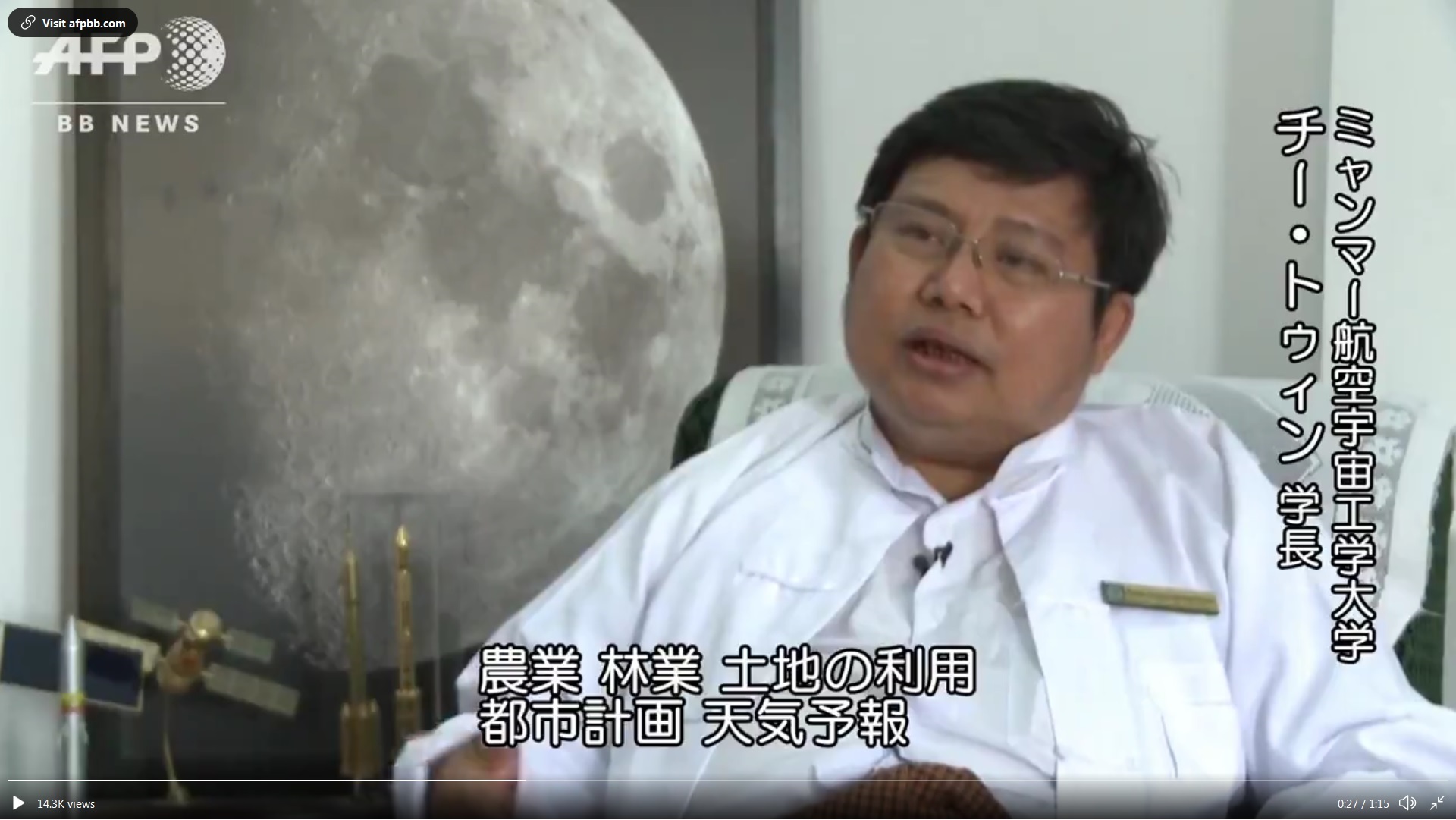Japan has the capability. Its another question if they chose to send a guy or not. Doesnt make their space agency less.
They sent a rover to a fast moving asteroid somewhere near Jupiter, which succesfully landed, is going to collect samples, jump up back to the satellite rotating the asteroid and come back to earth. Do you even comprehend how complex that project. Japan is right along with the top space faring nations.
Japan.
very unfair to not have that option.
Why Japan and Europe not included in the vote. Though I voted for India would have preferred Japan if it's on the list...
Why Japan and Europe not included in the vote. Though I voted for India would have preferred Japan if it's on the list...
Dude you might be right after all. India simply lacks the
green light to be ready before 2025.
Proof, India was supposed to launch its first orbital test flight of Gaganyaan capsule in 3 months (December 2020), while even spacesuits and seats are now said to be imported from Russia, along the training.
But I told you since day one that India could never beat North Korea in this race. Not in this world.
Japan In The Manned Space Race
Nearly all industrialized nations have at least some sort of manned space project, but only those with a
green light, can proceed first.
Others will have to wait patiently for their turn.
PD AeroSpace
Japanese startup PD AeroSpace aims for commercial space travel in 2023
2018/09/04/
The startup PD AeroSpace Ltd. is developing a reusable spacecraft shaped like an airplane to carry paying customers into space by 2023.
The Nagoya-based company plans to offer space flights up to an altitude of 110 kilometers using the craft, which is capable of carrying six passengers and two pilots, at a price of ¥17 million ($153,000) per person.
Currently, 11 workers at a plant in Hekinan, Aichi Prefecture, are working to fly an unmanned test vehicle up to an altitude of 100 km.
“We would like to open a new space era (with the spacecraft),” said Shuji Ogawa, the 48-year-old president of PD AeroSpace.
Last summer, the company successfully carried out a combustion experiment with the spacecraft’s pulse detonation engine, which can switch from air-breathing mode, where propulsion is achieved through pushing out hot exhaust gases, to rocket mode.
According to the company’s plan, the spaceship will change its mode of combustion at an altitude of 15 km to ascend further, and passengers will be able to enjoy a near weightless experience for about five minutes while staring down at Earth.
By launching a reusable spacecraft from airport runways, PD AeroSpace aims to keep costs down compared to using nonreusable rockets.
Ogawa founded the startup in 2007 after being inspired by Scaled Composites LLC’s SpaceShipOne, which in 2004 became the first privately owned piloted vehicle to reach space. It won the $10 million Ansari X Prize, established to encourage entrepreneurship in space travel.
The space tourism industry at one point lost steam due to a series of accidents and a reluctance to invest in the field, but it appears to have regained momentum, with U.S. companies taking the lead.
Backed by investments from firms such as ANA Holdings Inc., as well as support from some 40 expert volunteer workers, PD AeroSpace is trying to overcome numerous challenges, including the procurement of funds.
“Space has the power to attract people,” Ogawa said.
The startup PD AeroSpace Ltd. is developing a reusable spacecraft shaped like an airplane to carry paying customers into space by 2023. The Nagoya-based co

www.japantimes.co.jp
High-end tourists from China targeted as Japan’s new ‘space port’ prepares for lift-off
Published: 5:38pm, 14 Sep, 2020
• Spacecraft developer PD AeroSpace is developing an airport on an island in Okinawa prefecture for space tourism by 2025
• The company is eyeing wealthy adventure seekers, particularly those from China, for initial flights that are expected to cost around US$141,000
Japan ’s first passenger “space port” is to be built on the tiny Okinawan island of Miyako Shimojishima, with spacecraft developer PD AeroSpace aiming to be aloft by 2025 as it seeks to attract adventurous travellers from across the region – particularly well-heeled thrillseekers from China.
The company, based in the city of Nagoya in central Japan, has reached an agreement with the Okinawa prefectural government to develop the island’s little-used airport for use as the departure point for its state-of-the-art space plane, as well as landing facilities for returning tourists.
“We plan to target people from across Asia and we believe there are a lot of people who would very much like to go into space if only the price of a flight was lower,” said Ryo Ojima from PD Aerospace’s business development department. He confirmed the company was “targeting people from China” for its flights, but said they would take anyone who wants to experience space.
Ojima said initial flights would last for about 90 minutes and reach an altitude of 100km, which the World Air Sports Federation has set as the boundary between the atmosphere and space. For five minutes, passengers will be able to experience the weightless conditions of astronauts, while the journey will provide stunning views of the Earth.
“We are aiming to reach 100km because that is what is known as the Karman line, or the ‘gateway to the universe’,” he said.
The cost of a flight is expected to be around Ұ15 million (US$141,000), Ojima told This Week in Asia, or around 70 per cent of the cost proposed by similar space tourism ventures.
“We selected Miyako Shimojishima for four primary reasons,” he said. “It has a 3,000-metre runway, it has a training airspace that is aligned north-south, it faces the ocean and the local authorities have been cooperative.”
Tourism-dependent Okinawa has been hit by the Covid-19 pandemic, with people working in the local travel industry describing the outlook as “grim”. As such, experts say, the possibility of space tourism in the next five years could provide a much-needed boost for the prefecture.
“Okinawa has felt the loss of the China market due to the coronavirus, so it makes complete sense that they would go after wealthy travellers from the big cities – Beijing, Shanghai, Hong Kong – as their passengers,” said Ashley Harvey, general manager of destination management firm Aviareps Japan.
“All those cities have huge populations, large numbers of people with money to spend and easy access to Okinawa. These are people who have already travelled overseas and have seen many of the major attractions around the world, so they are going to be looking for something completely different, something that none of their friends have tried before.
“An experience like this would be something special and something that enough people would want to try to make it a viable business.”
In its first year of operations, PD AeroSpace expects to take around 100 people into orbit, but it plans to operate 200 flights a year – carrying 1,000 passengers – by 2030. It has big ambitions beyond these initial flights and ultimately intends to be involved in the construction of an orbiting space hotel.
The company has tied up with All Nippon Airways (ANA) and domestic travel giant HIS, with a spokeswoman for HIS pointing out that a number of legal revisions need to be passed before space travel can become a reality.
“We believe there will be strong demand, initially from Japan but very quickly after that from across the entire region [once that hurdle has been overcome],” she said.
Miyako Shimojishima, which is nearly 300km from Okinawa’s main island, covers an area of just 10 sq km and is connected to neighbouring islands by bridges.
Its airport was built in 1979 to serve as Japan’s sole pilot training facility for jet aircraft, with ANA and Japan Airlines
using the facility until it became significantly cheaper to train pilots on simulators. The airfield is presently used for tourist flights.
“It’s a very appealing and dream-inspiring proposal,” Okinawa prefecture vice governor Kiichiro Jahana said of PD AeroSpace’s plan. “The space industry is a field with high future prospects and one that continues to grow around the world … This will have a positive ripple effect across the entire prefecture.”
PD AeroSpace is developing an airport on an island in Okinawa prefecture for space tourism by 2025, and is eyeing wealth adventure seekers – particularly those from China.

www.scmp.com

https://archive.is/xRy0n/7fe1d311fbdd510abd58f61eabab0d4e5e0a93ed.png ; https://archive.is/xRy0n/df90d5daf40970542127a154b15fee6672efd4b4/scr.png ; http://web.archive.org/web/20200914172645/https://i.imgur.com/4z2Wjov.png ; https://pdas.co.jp/en/index.html ; https://pdas.co.jp/en/documents/Company_Outline_EN.pdf ; https://imgur.com/a/13KLAK2
▲ 1. Pegasus vs New Sheppard & SpaceShip Two.
https://archive.vn/Ph47O/bc8f15784841f17c23601a66b657da329b3ac7bc.png ; https://archive.vn/Ph47O/dd873947322e38838c0593634ab74b328dd4deb0/scr.png ; http://web.archive.org/web/20200914172907/https://i.imgur.com/Y9cCHqt.png ; https://pdas.co.jp/en/index.html ; https://pdas.co.jp/en/documents/Company_Outline_EN.pdf ; https://imgur.com/a/13KLAK2
▲ 2. Switchable Dual Combustion Mode engine.
https://archive.vn/BRXMq/7bc2cfeaed3c945e3c4b67a602af97d07a6e67da.png ; https://archive.vn/BRXMq/0530ce68e0b8bdb8f3d017a2443a904684bc88f8/scr.png ; http://web.archive.org/web/20200914173146/https://i.imgur.com/N3JR5mo.png ; https://pdas.co.jp/en/index.html ; https://pdas.co.jp/en/documents/Company_Outline_EN.pdf ; https://imgur.com/a/13KLAK2
▲ 3. From Jet Mode To Rocket Mode.
https://archive.vn/4s1W8/261dba9ecd863297e63c32b4e7a8a9e1f86b8b2f.png ; https://archive.vn/4s1W8/18cf4c37b99029ba2f7ce6283dbb81048031e5ed/scr.png ; http://web.archive.org/web/20200914173543/https://i.imgur.com/Bka8GaX.png ; https://pdas.co.jp/en/index.html ; https://pdas.co.jp/en/documents/Company_Outline_EN.pdf ; https://imgur.com/a/13KLAK2
▲ 4. PDAS-X06 & PDAS-X07 Demonstrators.
https://archive.vn/S8eC8/1febc34264ff647637d589719cd7f75e09eba8e9.png ; https://archive.vn/S8eC8/bac0598d7365caec07a2230392ca4320bd21ade2/scr.png ; http://web.archive.org/web/20200914173805/https://i.imgur.com/ebJ3MMI.png ; https://pdas.co.jp/en/index.html ; https://pdas.co.jp/en/documents/Company_Outline_EN.pdf ; https://imgur.com/a/13KLAK2
▲ 5. Pegasus Suborbital Spaceplane.
https://archive.vn/Z78DD/47b4a9e6decd2caf1e508d70f339041fea20023b.png ; https://archive.vn/Z78DD/36ec61082e65e71bc59eac8ef3f6852f18682636/scr.png ; http://web.archive.org/web/20200914173958/https://i.imgur.com/W5zx8PI.png ; https://pdas.co.jp/en/index.html ; https://pdas.co.jp/en/documents/Company_Outline_EN.pdf ; https://imgur.com/a/13KLAK2
▲ 6. Suborbital space flight profile.
Is it only another trick meant to belittle the upcoming North Korean exploit, the way the 2004 Ansary X Prize was intended to minimize the achievement of Yang Liwei on 15th October 2003, China's first Chinese indigenous astronaut aboard Shenzhou-5?
Obviously, only historians can give us a definitive answer to this question.
Therefore the revised list of manned spacefaring powers, by order of
green light, that is historical milestone and claimed legitimacy, as of September 2020:
1. A
2. A'
3. China: Wan Hu's (万虎) rocket-propelled manned winged Flying Vehicle maiden flight ended in failure, 1465 AD.
4. Korea: Jung Pyung Gu (정평구, 鄭平九) first recorded manned rocket propelled flight with a 12 km flight, 1590 AD.
5. Myanmar-Thailand-Laos-Cambodia: legend of Payawan failed winged manned rocket propelled flight, after 13th century A.D.
6. Turkey: Lagâri Hasan Çelebi successful manned rocket flight, 1633 AD.
7. Japan: world's first manned space program started in 1940. Upcoming large scale attacks with crewed gigantic stratospheric FUGO airships announced on 4th June 1945 AD.
8. India: Mysorean rockets, 18th century AD.
9. First european contender.









































